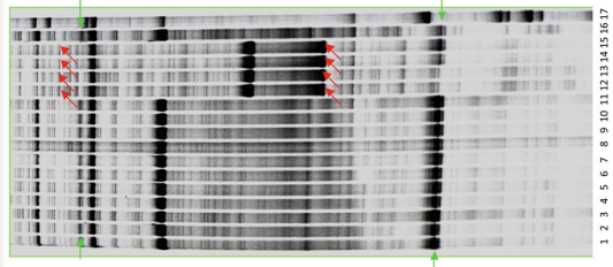Cell DNA Fingerprint Analysis Services
Creative Bioarray's cell DNA fingerprint analysis is realized by the method of fragment polymorphism amplification, which can identify the identity of cell lines or verify the cell lines used for drug discovery and production. Detect DNA fingerprints generated by genome polymorphism through internal optimization methods, and provide customers with time-efficient technical services.
FLP and DNA Pingerprint
Methods for cell line authentication and identification include species-specific immunofluorescence, isoenzyme phenotype, chromosome analysis, and DNA fingerprinting. The earliest method is Restriction Fragment Length Polymorphism (RFLP) used in early studies of DNA fingerprinting in cell lines. Limited by the lengthy analysis process, the method of identifying amplified fragment length polymorphisms through PCR amplification has gradually developed, forming the amplified fragment length polymorphism analysis (AFLP). Through PCR amplification of selected fragment length polymorphic loci, DNA fingerprinting of known targets in cell lines is performed. The cell identification pattern of this method is consistent with the pattern obtained by isoenzyme phenotype and RPLF-DNA fingerprinting and can be reproduced within and between analyses of different DNA extracts of the same cell line. AFLP greatly improves the speed of cell DNA fingerprint analysis.
 Fig 1. An example of AFLP spectrum analysis. (Sheeja T E, et al. 2021)
Fig 1. An example of AFLP spectrum analysis. (Sheeja T E, et al. 2021)
DNA Analysis Services
The ability of PCR-based fragment length polymorphism DNA fingerprinting to accurately identify alleles of different human cell lines at multiple polymorphic fragment length polymorphism sites. This proves the feasibility of developing a cell line DNA fingerprint reference database as a powerful additional tool for future cell line identification and authentication. Fragment polymorphism analysis is a technique used to detect DNA polymorphisms when genomic information is unknown. In DNA fingerprint analysis, the total DNA of the separated sample is digested with restriction enzymes, and a part of the DNA fragments are selected for PCR amplification and visualization, and a unique DNA fingerprint is formed. Its advantage is the rapid production of sample-specific labeled fragments without the need for sequence data support. We accept cell lines or isolated total DNA samples. The basic service process includes total DNA isolation (optional), restriction digestion (fragmentation), specific fragment amplification, capillary electrophoresis, data harvesting, and analysis. Each step of the service has a special quality control link to ensure the accuracy of the analysis. The method used to interrogate the sample genome through the hypervariable region probe can determine the identity and/or cross-contamination of the cell line, helping researchers to characterize the cell line.
 Fig 2. Flow chart of cell fingerprint analysis service.
Fig 2. Flow chart of cell fingerprint analysis service.
Creative Bioarray's comprehensive cell line DNA analysis service solution aims to characterize and identify cell lines through FLP, helping researchers to quickly analyze cell lines using cell DNA fingerprints. The time-effective AFLP method can help customers quickly obtain analysis results, and you will benefit from our technical expertise and service experience. Ours will provide you with a one-stop service experience. If you are interested in cell DNA analysis services or have any specific needs, please feel free to contact us. We look forward to working with you in the near future.
References:
- Sheeja T E, Kumar I P V, Giridhari A, et al. Amplified Fragment Length Polymorphism: Applications and Recent Developments[M]//Molecular Plant Taxonomy. Humana, New York, NY, 2021: 187-218.
- Paun O, Schönswetter P. Amplified fragment length polymorphism: an invaluable fingerprinting technique for genomic, transcriptomic, and epigenetic studies[M]//Plant DNA Fingerprinting and Barcoding. Humana Press, 2012: 75-87.
For research use only. Not for any other purpose.

 Fig 1. An example of AFLP spectrum analysis. (Sheeja T E, et al. 2021)
Fig 1. An example of AFLP spectrum analysis. (Sheeja T E, et al. 2021)  Fig 2. Flow chart of cell fingerprint analysis service.
Fig 2. Flow chart of cell fingerprint analysis service. 